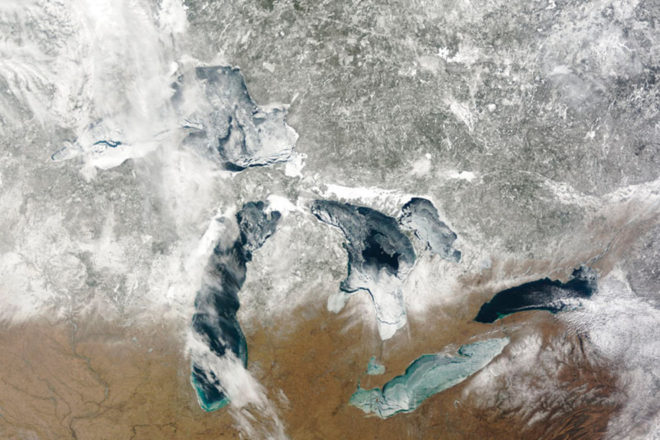How Climate Change Is Affecting Wisconsin: Latest report assesses changes, discusses solutions
- Share
- Tweet
- Pin
- Share

The Wisconsin Initiative on Climate Change Impacts (WICCI) has released its 2021 climate-assessment report, “Wisconsin’s Changing Climate: Impacts and Solutions for a Warmer Climate.” The report is the most comprehensive assessment to date on the effects of climate change in the state and includes details on the continued warming and increased precipitation throughout Wisconsin.
The report found that since 1950, statewide temperatures have warmed by 3 degrees F, and precipitation has increased 17%. Meanwhile, the last two decades have been the warmest on record, and the past decade has been the wettest. The report stresses the need for significant and rapid reductions in greenhouse-gas emissions and identifies steps that Wisconsin can take to store carbon, reduce emissions and adapt to a wetter and warmer future.
Led by UW-Madison’s Nelson Institute for Environmental Studies and the Wisconsin Department of Natural Resources (DNR), the report is the product of 14 working groups that include more than 200 scientists, practitioners and Wisconsin residents representing more than 50 national, state and local agencies, nonprofit organizations and universities. A science advisory board peer-reviewed the final report.
In 2019, Gov. Tony Evers signed Executive Order #52, launching the Governor’s Task Force on Climate Change and directing the DNR to work with WICCI and the Nelson Institute for Environmental Studies to release a new climate-assessment report. The previous report was released in 2011.
WICCI is a nationally recognized collaboration of scientists and stakeholders – formed as a partnership between the Nelson Institute for Environmental Studies and the DNR – that works to help Wisconsin residents and policymakers understand the effects of climate change.
“The report contains critical information and will be a valuable tool for Wisconsinites as the state takes its next steps to become more climate resilient,” said Pam Porter, WICCI co-director and DNR policy adviser.
The report also highlights the ways in which climate change is affecting communities across the state. Those in the Driftless region noted that an increase in flooding has deeply affected agriculture and homes across the area. In the state’s northern regions, a warmer and wetter climate has meant changes to plant and animal life. And communities are experiencing eroding bluffs and infrastructure issues along the coast because of fluctuating water levels.
“It is not our imagination that extreme weather, in general, is getting more pronounced, and the price tag for the extreme events is rising,” said Steve Vavrus, WICCI co-director and Nelson Institute senior scientist – often disproportionately more for some communities than others, including low-income communities, communities of color, Tribal Nations and other indigenous communities.
Although the report outlines sobering data about the future climate, changes in attitudes toward climate change and an improved understanding of climate-change science have led to creative solutions. The report outlines many of these solutions, including reducing greenhouse gasses, increasing continuous living cover and rotationally managed pasture on farmland, implementing habitat-management changes, and designing and building infrastructure that accounts for future climate conditions.
